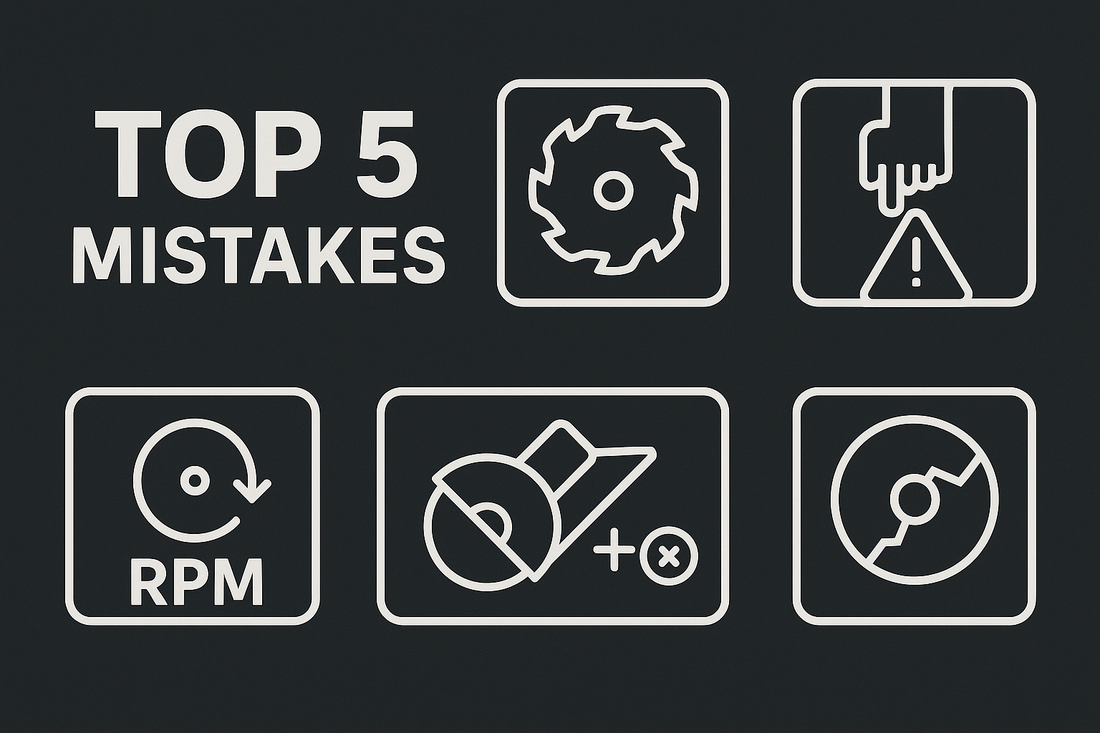
Top 5 Mistakes to Avoid When Using Cut-Off Wheels
Cut-off wheels are powerful tools—when used correctly. Whether you're working in a metal shop or tackling a home DIY project, knowing what not to do is just as important as knowing how to do it right.
Here are the top five mistakes to avoid when using cut-off wheels—and how to stay safe and efficient on the job.
1. Using the Wrong Wheel for the Material
Not all cut-off wheels are designed for the same job. Using an aluminum oxide wheel on concrete? Bad idea. Trying to cut hardened steel with a diamond wheel? You're asking for trouble.
How to avoid it:
Always check the label. Make sure the wheel is designed for the material—whether it's steel, stainless steel, rebar, concrete, or tile.
2. Exceeding the Maximum RPM
Every cut-off wheel has a rated maximum RPM. Exceeding that speed can cause the wheel to crack, disintegrate, or even explode—posing serious risk to the user.
How to avoid it:
Match the RPM of your tool with the maximum rated RPM on the wheel. If the label says 13,300 RPM, don’t put it on a 15,000 RPM grinder.
3. Applying Too Much Pressure
Many users think pressing harder will speed up the cut. In reality, excessive pressure can overheat the wheel, wear it out faster, and cause it to shatter.
How to avoid it:
Let the tool do the work. Apply light, steady pressure and allow the abrasive to cut naturally.
4. Cutting at the Wrong Angle
Cut-off wheels are designed for straight-line cuts. Tilting the wheel, twisting mid-cut, or using the side of the disc can cause uneven wear or breakage.
How to avoid it:
Always cut in a straight, controlled motion. Never use the wheel's side for grinding or shaping.
5. Ignoring Wear or Damage Signs
Small cracks, chips, or signs of imbalance are serious red flags. Continuing to use a damaged wheel is dangerous.
How to avoid it:
Inspect each wheel before use. If it’s worn down past its usable diameter, has visible cracks, or vibrates during use—stop and replace it immediately.
Final Thoughts
Cut-off wheels are incredibly useful—but only when used correctly. Avoiding these five common mistakes can help extend the life of your tools, improve your cutting performance, and most importantly, keep you safe.
Stay sharp. Cut smart. Work safe.
